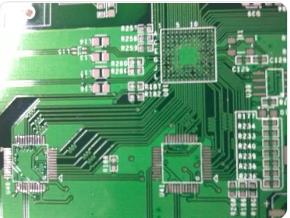In PCBA foundry materials, you may be accustomed to seeing computer internal components composed of rigid linear circuit boards. But FPC electronics is a paradigm shift that we are used to. It is a technology that supports foldable smart phone displays and various devices with conversion HMI.
This technology is really exciting, and it offers many advantages in manufacturing. In this file, you will be provided with the latest assessment of the prospects of flexible printed circuit boards.
What is flexible electronics
Flexible electronic devices, also known as flexible circuits, include electronic devices mounted on flexible plastic substrates (such as conductive polyester film).

The electronic components of flexible electronic products are the same as those of rigid PCBs. But more importantly, the flexibility of flexible electronic products creates a completely different world between flexible electronic products and PCBs.
Other popular plastic substrate materials that can be used for flexible circuit boards include polyimide and PEEK. You can also use silicon substrates thinned by etching techniques. By doing this, you can make the silicon substrate extremely flexible.
Application of flexible electronics
The rigidity of PCBs limits their applicability in applications where flexibility, space efficiency, and cost-effectiveness are critical. An example of such an application is an electronic system that requires a 3-axis electrical connection, such as a camera.
In these cases, FCB electronic products are the best choice. The following is an outline of the key areas you should know, in which FCB electronics are very useful:
1. Computer System
Flexible electronics make up the mobile print head of the printer. They are also used to relay signals sent to the mobile arm that carries the read/write heads of the disk drive. Flexible electronic devices are also used to create switch matrices in computer keyboards.
2. Liquid crystal technology
Flexible plastic substrates for flexible electronics can be an excellent substitute for glass in LCD production. This makes the entire system flexible enough, because the film on top of the substrate is usually only a few microns thick.
3. Organic Light Emitting Diode (OLED) Technology
OLED is praised for its flexible display properties and is an alternative to backlight. You can enhance their applicability by making OLEDs more flexible.
4. Electronic Components
Flexible circuit boards provide a method for connecting electronic components such as resistors, capacitors, and integrated circuits. However, their applicability can also provide a method for interconnecting multiple electronic components directly or through connectors.
5. Car
Flexible electronic products have many uses in automobiles. Compartments such as the control device under the hood, the ABS system, and the instrument panel can all take advantage of the advantages of flexible circuits.
6. Consumer Electronics
From cameras to entertainment systems and wearable devices, FCB provides excellent maintainability for a large number of consumer electronic products.
7. Industrial applications
Industrial equipment, including medical and sensor equipment, has different requirements for flexible interconnect circuits.
8. Solar cells
Flexible solar cells have been widely used to power satellites. In addition to being lightweight, they can be easily folded before launch and then deployed during flight.
It sounds pretty good? Well, wait until you learn more about flexible electronics in the next chapter.
Soft Board Electronics
What is FPC in electronic products?
The fabricated printed circuit (FPC) is a flexible electronic product with a protective coating that can improve its performance. They usually consist of a thin insulating polymer film that contains various patterns of electronic circuits.
These circuits use thin polymer coatings, or any similar coatings, or laminates that provide additional protective layers. You can also use photolithography to manufacture FPC electronic products.
With a comprehensive understanding of various types of FPC, you will be able to make better use of the advantages of FPC. By doing this, you will be able to overcome many of the limitations of the PCB, because the FPC can carry the same electronic components as the PCB.
Some applications where FPC has greater advantages over PCB include:
Electronic products with compact, portable packages in which the electrical connection must be maintained on a 3-axis, such as in a camera.
Electronic equipment that must be folded or bent during normal use.
Electrical components that require interconnection between sub-components, such as electrical systems in automobiles, satellites, and local technology installations. In these cases, FCB is lighter and more efficient than wire harnesses.
For many other appliances, space efficiency and weight are key considerations.
In some cases, they can complement and replace each other. But it is important to note that FCB has wider applicability than PCB.
The printed circuit board or PCB is the board that carries the circuit. With its multilayer structure, it can perform multiple functions at the same time and handle large current transmission.
Of course, so far, you already know that the main difference between the two lies in the material of the printed circuit. In theory, the difference is that instead of etching the print on a rigid board, it prints on a flexible plastic board.